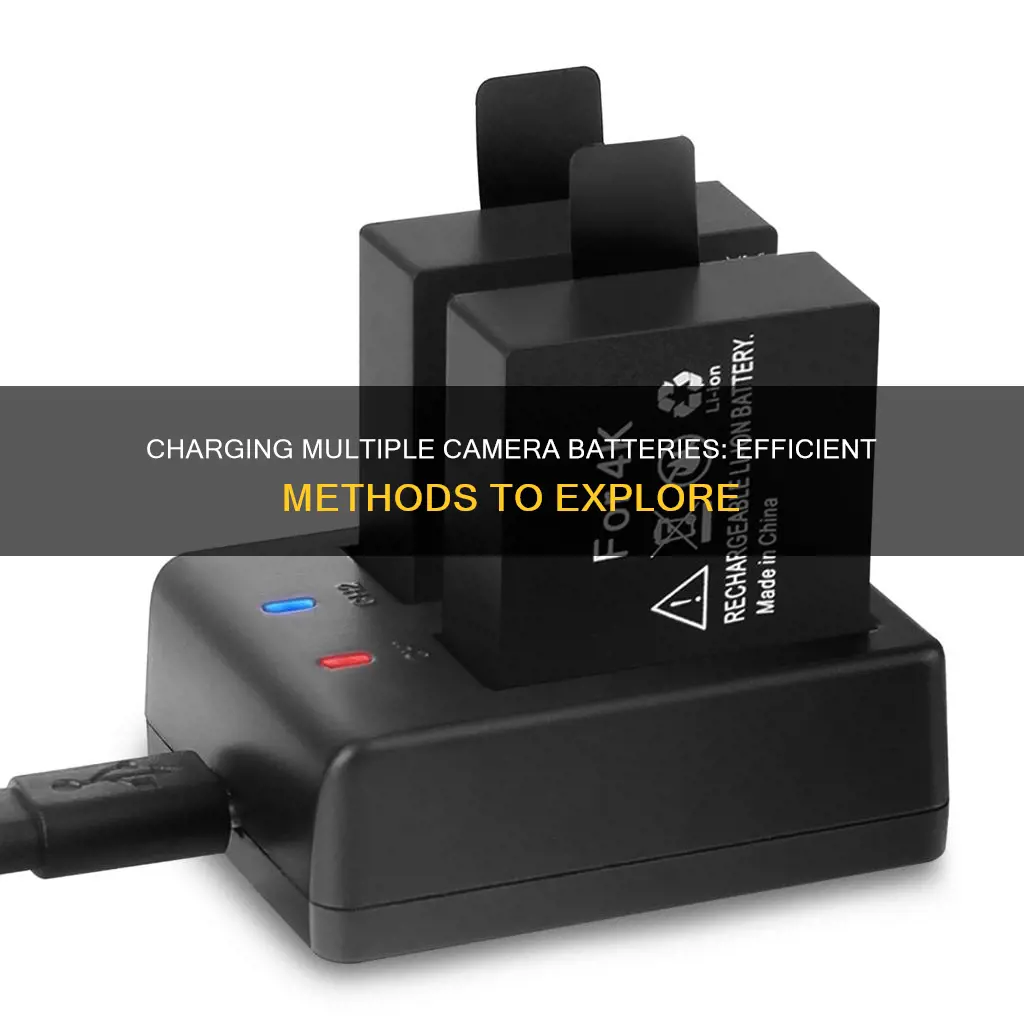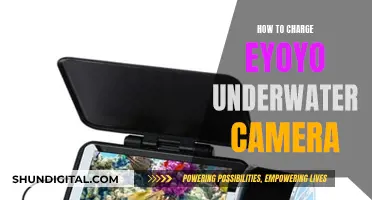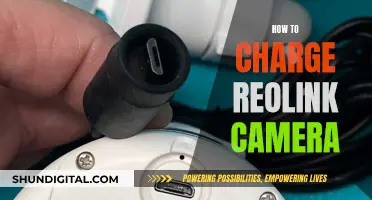
Charging multiple camera batteries simultaneously is a convenient way to save time and effort, especially for photographers and videographers who rely on multiple devices. While traditional charging methods often involve carrying heavy bags filled with chargers, adapters, and cords, new innovative solutions offer a more compact and efficient approach. One such solution is the XTAR SN4 Multi Battery Multi-Model Camera Battery Charger, which can charge up to four batteries simultaneously. Another creative approach is the use of solar panels with techniques like parallel, series, or a combination of both linkages to charge multiple batteries at once. Additionally, the Octopus, a setup with a single international adapter and various compact chargers, can charge up to 17 devices and batteries. These methods not only streamline the charging process but also ensure that photographers and videographers are always ready to capture their next shot without worrying about dead batteries.
| Characteristics | Values |
|---|---|
| Number of batteries charged at once | Up to 17 |
| Battery types | AA, AAA, NP-F, lithium-ion, lead-acid, saltwater |
| Charging methods | Parallel, series, or a combination |
| Required components | Fuses, charge controllers, solar panels |
| Safety considerations | Prevent electrical faults, fires, and explosions |
| Charging speed | Varies; fast chargers are heavy and expensive |
| Battery brands | Eneloop, Sony, Canon, Panasonic, Nikon, GoPro, Fujifilm, Olympus |
| Additional accessories | International adapter, USB cables, battery charger docks |
What You'll Learn

Using a solar panel
Parallel Linkage
For this method, you will need two or more identical batteries connected in parallel. This involves connecting the positive poles of the batteries to each other and the negative poles to each other. This type of connection will result in the batteries having double the energy capacity while maintaining the same voltage. For example, if you have two 12-volt batteries with 100 amp hours (Ah) each, connecting them in parallel will result in an output voltage of 12 volts and a total capacity of 200Ah. This method is ideal when you require greater battery capacity and want to use devices connected to the solar panel for extended periods.
It is important to note that you should always install a fuse between each battery to reduce the risk of electrical faults and short circuits. The fuse will interrupt the connection in case of a short circuit, protecting the system and preventing electrocution.
Series Linkage
The series linkage method also requires two or more identical batteries. However, instead of connecting positive to positive and negative to negative, you will connect the positive pole of one battery to the negative pole of the other. This type of connection will result in the voltage of the batteries being added together while keeping the total capacity the same. For example, if you have two 12-volt batteries with 100Ah each, connecting them in series will result in an output voltage of 24 volts and a total capacity of 100Ah. Series connections are advantageous as they optimize the system's efficiency by minimizing energy losses.
As with the parallel connection, it is important to use a charge controller to regulate the energy flow and prevent overcharging or overheating issues.
Series and Parallel Combo
The third method combines the benefits of both parallel and series connections. First, connect the batteries in series as described in the previous method. Then, add a parallel connection by connecting the positive poles of the batteries to each other and the negative poles to each other. This combination allows you to double both the energy capacity and the voltage compared to a single battery. For example, if you have two 9-volt batteries with 100Ah each, using this method will result in an output voltage of 18 volts and a total capacity of 200Ah.
When using this method, it is important to use cables of the same length for both series and parallel connections and keep them as short as possible to minimize energy loss.
Additional Considerations
When charging multiple camera batteries with a solar panel, it is important to consider the size of the solar panel, as this will determine the charging time. A larger solar panel will generally charge the batteries faster compared to a smaller one. Additionally, factors such as the placement and orientation of the solar panel, the amount of sunlight, and the efficiency of the panel will impact the charging time.
To ensure the batteries charge efficiently, it is recommended to place the panel in a location that receives direct sunlight for most of the day. You can also use a solar tracker, which will adjust the direction of the panel to maximize sunlight exposure and improve charging efficiency.
By understanding these methods and applying them correctly, you can effectively charge multiple camera batteries with a single solar panel, making the most of your battery capacity and enhancing the performance of your solar panel system.
Charging Your Camera in Europe: What You Need to Know
You may want to see also

Using a multi-battery charger
Choosing a Multi-Battery Charger
- Consider the XTAR SN4 Multi Battery Charger: This charger supports up to 11 unique charging plates for different battery types, including Sony, Canon, and Nikon cameras. It offers fast charging with a maximum of 3A charging speed per slot, which is four times faster than standard hubs or cables. It also features a modular design for easy storage and portability.
- Look for Fast Charging Options: Some chargers, like the XTAR SN4, offer quick-charge capabilities that can significantly reduce downtime during intensive shooting sessions.
- Check for Safety Features: Choose a charger with built-in safety mechanisms, such as over-current, over-voltage, short-circuit, and temperature protection. This will help protect your batteries and equipment from potential damage.
Using the Multi-Battery Charger
- Connect to a Power Source: Most multi-battery chargers will require a power source, such as a PD45W adapter or a power strip, to function effectively. Ensure you have the correct power adapter to avoid compatibility issues.
- Prepare the Charger: If your charger has multiple charging docks or plates, attach the ones you need for your specific battery types. Some chargers may come with a variety of options, so you can mix and match as needed.
- Insert Batteries: Place your camera batteries into the corresponding slots or docks on the charger. Ensure proper alignment and connection to prevent any charging issues.
- Monitor Charging Status: Many multi-battery chargers have indicators or displays that show the charging status and battery health. Keep an eye on these indicators to know when your batteries are fully charged and ready for use.
- Practice Proper Battery Care: Always handle and store your batteries with care. Regularly check and maintain battery levels, especially before important shoots, to ensure optimal performance.
Belkin Camera Battery Charging: A Step-by-Step Guide
You may want to see also

Charging batteries in parallel
Charging multiple camera batteries at once can be achieved through a variety of methods, one of which is charging batteries in parallel. This method involves connecting batteries together to form a battery pack, which will have the same voltage as each individual battery.
To ensure a proper parallel connection, it is crucial to follow specific guidelines. Firstly, only batteries with the same voltage should be connected in parallel. Mixing batteries with different voltages can lead to imbalances and unsafe conditions. Secondly, it is important to use batteries of the same type, age, and size. Combining different types of batteries, such as deep cycle and starting batteries, can result in uneven charging and reduced battery lifespan.
When connecting the batteries, ensure that the positive terminals of each battery are connected to each other, and the negative terminals are connected separately. This creates a parallel circuit, allowing the batteries to be charged simultaneously.
Additionally, to achieve "Balanced Charging," the charging leads should be configured to ensure even distribution of resistance across all batteries. This can be done by starting one of the charging leads from the opposite direction, creating a symmetrical current draw.
For a "Perfectly Balanced Charging" setup, it is recommended to use consistent lengths and wire gauges for the battery leads. This ensures that each battery draws the same amount of current from the charger, maximizing the lifespan of all batteries by providing even charging and discharging.
By following these guidelines, you can safely charge multiple camera batteries at once using the parallel charging method.
Charging Cameras in Remote Wilderness: Alone's Secret
You may want to see also

Charging batteries in series
To connect batteries in series, you need to join the positive terminal of one battery to the negative terminal of the next battery. For instance, if you have two 6V batteries, you can connect them in series to achieve a total voltage output of 12V. If you have more than two batteries, you can continue this pattern by connecting the positive terminal of the second battery to the negative terminal of the third, and so on, until the last battery, where you will connect to your device or charger.
It is important to note that when batteries are connected in series, the positive and negative terminals of the first and last batteries in the series are the only ones that connect to the device or charger. The positive and negative terminals of the intermediate batteries are connected to each other.
Additionally, when charging batteries in series, it is recommended that the batteries are of the same manufacturer, model, AH rating, age, condition, and state of charge (SOC) for optimal performance.
While connecting batteries in series increases voltage output, it does not increase the amp-hour capacity of the system. If you want to increase both voltage and capacity, you can consider a series-parallel combination, which involves connecting batteries in series and then connecting these series in parallel.
Charging Camera Batteries: DIY Home Hacks
You may want to see also

Using a power strip
First, it's important to choose the right power strip for your needs. If you have multiple camera battery chargers that are wide and bulky, consider investing in a larger power strip designed to accommodate those "wall warts." These power strips are usually more expensive but offer much better quality than the cheap, standard ones. Look for one with widely spaced outlets to fit all your chargers comfortably.
Additionally, you can opt for a flexible power strip with round joints at each receptacle, allowing you to rotate it to fit oddly shaped plugs. This type of power strip gives you more flexibility in arranging your chargers.
Once you have the appropriate power strip, make sure to follow safety precautions when charging your camera batteries. Avoid touching the ends of wires unless they are insulated, and do not touch the circuit if the wires or batteries are wet. It's also important not to mix sizes of batteries with different voltages or amp-hour (AH) capacities. If necessary, use rubber gloves for insulation and protection from electrical hazards.
Now, let's discuss the two primary methods for charging multiple batteries: the series method and the parallel method.
The series method involves connecting the positive pole of one battery to the negative pole of another battery. This configuration increases the total voltage, but the capacity (amp-hours) remains unchanged. For example, connecting two 9-volt batteries in series will result in a total voltage of 18 volts, but the amp-hours will stay the same. This method is suitable for optimizing the efficiency of your charging setup while minimizing energy losses.
On the other hand, the parallel method involves connecting the positive poles of the batteries to each other and the negative poles to each other. This setup keeps the voltage the same across all batteries while increasing the total amp-hour capacity. For instance, connecting two identical 14-volt batteries with 150 amp-hours each in parallel will result in a combined capacity of 300 amp-hours, allowing you to power your devices for longer durations.
You can also combine these two methods by first connecting the batteries in series and then creating a parallel connection between the sets of batteries. This combination gives you the benefit of both increased voltage and increased capacity, resulting in a highly efficient charging setup.
Remember to use fuses and charge controllers when charging multiple camera batteries. Fuses protect your appliances and circuit wiring in case of electrical faults or excessive current flow. Charge controllers, on the other hand, regulate the current flowing to the batteries, ensuring they don't exceed their charging load and preventing overheating or explosions.
Lastly, when using a power strip to charge multiple camera batteries, always plug the power strip into a stable power source, such as a UPS unit, to ensure a consistent and safe charge for all your batteries.
Reviving Dionic Camera Batteries: Charging Tips and Tricks
You may want to see also
Frequently asked questions
You can use a multi-battery charger like the XTAR SN4 Multi Battery Multi-Model Camera Battery Charger, which can charge up to four batteries simultaneously. It's a modular charging dock that supports various battery models and brands, including Nikon, Sony, Canon, GoPro, Panasonic, Fujifilm, and Olympus.
Another option is to use a power strip with AC-powered single chargers. This method is reasonably priced, but keep in mind that the charging time will be slower compared to using a multi-battery charger.
If you're open to second-hand options, you can also look for used chargers on marketplaces like eBay or Craigslist to save some money.
Always ensure you follow safety guidelines when charging multiple batteries.
When charging multiple camera batteries at once, there are a few safety precautions to keep in mind:
- Ensure proper ventilation and a cool environment. Batteries can generate heat during charging, so a well-ventilated and cool area can help prevent overheating.
- Use identical batteries. Mixing different battery types or brands can lead to voltage discrepancies and potentially cause issues.
- Use fuses or a fuse box to protect against electrical faults and short circuits. This adds an extra layer of protection for your equipment and yourself.
- Always wear eye protection when working with batteries.
- Consult a professional if you're unsure about the setup or have any concerns.
Yes, there are a few alternatives to consider:
- Use a solar panel: If you're often outdoors or in locations with access to sunlight, you can utilize a solar panel to charge your camera batteries. This method may take longer but is a sustainable option.
- Invest in multiple chargers: If you have the budget, purchasing multiple chargers for your camera batteries can be a convenient option. This way, you can charge several batteries at once without relying on a single charger.
- Carry extra batteries: If you don't always have access to a power source, consider investing in additional camera batteries. This way, you can swap out depleted batteries with fully charged ones, ensuring you never run out of power during a shoot.







